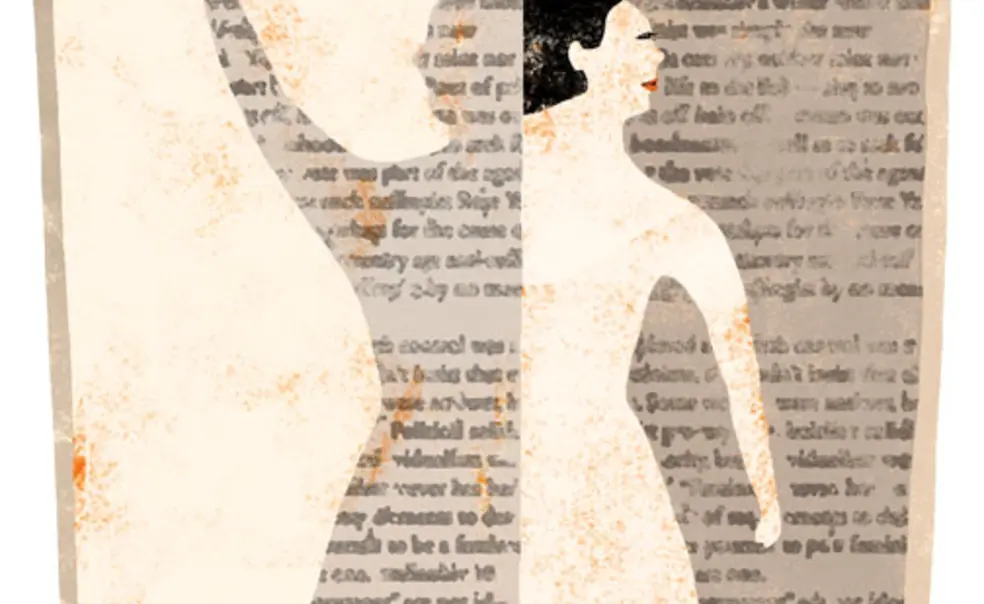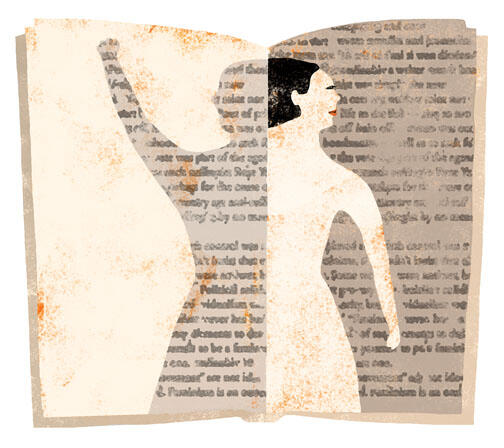Professor emerita Elaine Showalter is the author of A Jury of Her Peers, a literary history of American women writers from 1650 to the present, which will be published next month.
In an interview after the presidential election, Gov. Sarah Palin reflected on her problems with Democratic women voters and her perplexity at their lack of support for her vice-presidential candidacy: “Sometimes, you know, I consider myself, too, as a feminist, whatever that means.” Palin’s nomination set off a fierce debate about her credentials, with some hailing her feistiness and “new style of American muscular feminism,” and others questioning the “red-state feminism” that saw anti-abortion views, gun-ownership, and hockey-motherhood as qualifications for female empowerment and high national office. Can history help us decide what feminism means and who qualifies? Can we predict the future of feminism for the next generation?
The term “feminism” is only about a century old, and it always has had competing and conflicted definitions. In 1914, wrote novelist and journalist Edna Kenton, the term was “so new it isn’t in the dictionaries yet.” For Charlotte Perkins Gilman, a writer and theorist of women’s rights, the feminist was simply the new American woman of the 20th century, neither saint nor victim, who wanted to live her life to the full — “out of prison and off the pedestal, chains off, halo off.” Gilman was out to enlarge the meaning of womanhood as well as to seek full equality with men. Getting the vote was part of the agenda, but not all of it. Indeed, as the staunch suffragist Rose Young pointed out,“Some of the ablest workers for the cause of women that I have ever met in this country are anti-suffragists. ... On the other hand, being a suffragist by no means implies being a feminist.”
While many women believed that birth control was an essential condition of feminism, they didn’t insist that every feminist agree with them. Some women were antiwar, but pacifism was not a feminist prerequisite. Political solidarity with other women was a priority, but individualism was not only respected, but cherished. “Feminism” never has had a membership committee or a set of requirements to determine admission. If you consider yourself to be a feminist, even only sometimes, then you are one.
“Feminism” and a “women’s movement” are not identical, although they are often conflated. Feminism is an ongoing set of beliefs in the equality and development of women, which sometimes takes an activist form, but also can exist as an intellectual or philosophical position; women’s movements, by contrast, are infrequent and historically specific events with particular preconditions. They need a clear, concrete, and attainable goal, one significant enough to unite women across the dividing lines of race, class, and generation. Movements also require charismatic leaders who can channel the desire for the goal into productive coalitions, strong organization, and effective symbolism.
What is now called the “first wave” of feminism was the suffrage movement of the late 19th and early 20th centuries. American women wanted the vote, and temperance groups, political reformers, and welfare organizations joined to get it. But they could not imagine that decent women would want to campaign for president themselves. “Whoever is set up to be president of the United States,” warned Harriet Beecher Stowe, “is just set up to have his character torn off from his back in shreds and to be mauled, pummeled, and covered with dirt by every filthy paper all over the country. And no woman that was not willing to be dragged through every kennel and slopped into every dirty pail of water like an old mop would ever consent to run as a candidate.”
In the women’s liberation movement of the 1960s and 1970s — the second wave of feminism — women came together to fight for equal rights to education, work, and housing, and against sexual harassment, rape, and abuse. They also were ready to take on political careers, despite continued obstacles. In 1970, when I was the president of the New Jersey chapter of the National Organization for Women (NOW), we organized the first statewide women’s conference at the old Princeton Inn College (now Forbes College), to encourage women to seek political office. Millicent Fenwick, then a state legislator, was persuaded to run for the U. S. House of Representatives, but women had so little economic clout or access to capital that the president of NOW asked us to sell our wedding rings and other jewelry to raise money for feminist political campaigns. Princeton just had become coeducational; historian Christine Stansell ’71, a professor at Princeton for many years before moving to the University of Chicago, was in the first class with female undergraduates and remembers that “a woman couldn’t walk across the campus without encountering leers, snickers, and funny looks.” Even by the time I joined the Princeton faculty in 1984, the “Take Back the Night” march against date rape was the biggest event on the feminist student calendar.
It’s easy to forget how much has changed and improved for American women since that second wave. Today, Stansell notes, “our women move with complete ease, not only around the campus but around the world.” The women students I taught at Princeton for 20 years amazed me with their adventurousness, independence, brilliance, and resolve. Once almost invisible as administrators, women are now presidents of half the Ivy League universities; once dependent and cash-poor, they are now major contributors to college fundraising and important donors to political campaigns. The presidential campaign of 2008 made absolutely clear that women were unafraid to take on the toughest campaigns for high office, and that gender no longer was a barrier to women being taken seriously as political candidates. American voters now are looking at the candidate, not at the category.
So does feminism have a future in the 21st century? Some feminist second-wavers are still nostalgic for the solidarity and exhilaration of the past. They believe that we could “rekindle the spark and spirit of the feminist revolution,” as a group of “Veteran Feminists of America” put it in 2002, if only we could get our act together, if only young women would wake up, if only the media would make feminism “fashionable” again. I disagree; you have to be mighty deluded to believe that another feminist revolution is in store. Feminist ideals are much more diffuse and controversial today than they were in the 1970s, and the problems facing women now are neither readily addressed through legal action nor sufficiently unifying to override individual priorities.
In the 1970s, improved contraception and the right to abortion enabled women to plan their families and take some control of their reproductive lives. The social acceptance of single motherhood, fertility treatments, and the spread of adoption allowed more women to choose to raise children. At the same time, each new medical study highlighted contradictions between women’s social fulfillment and women’s health. We now know that delaying childbirth may increase the risk of breast cancer; taking hormone replacements can increase the risk of heart attacks, blood clots, and strokes. New scientific and medical technologies have redefined maternity and paternity; now DNA testing can establish biological fatherhood, while surrogacy complicates the meaning of motherhood. There is no consensus among feminists on how to react to these discoveries. And what positions should contemporary feminists take on issues of consumerism, the beauty industry, diet, and cosmetic surgery?
Women’s movements in the past effectively challenged laws of divorce and property, and debated the legality and morality of such vexing topics as prostitution and pornography. But we can’t march to solve loneliness, or vote to find good partners for unhappy single women, or pass legislation to prevent husbands from abandoning their aging wives for younger mates. The terrible persecutions that women face elsewhere across the world — sexual slavery, forced marriage, circumcision, honor killings, acid attacks — do not generate clear political solutions. Worthy goals such as world peace and ending hunger do not form the basis of specifically feminist mass movements. More and more, the media assure us, “women’s issues,” including care of children and aging parents, and the ideal balance of work and family, are men’s issues too — although in my 40 years as a professor, only women students ever wanted to talk to me about them.
But the very complexity, universality, and seeming intractability of these concerns make them ideal subjects for feminist scholarly analysis. Even without a women’s movement, feminism will survive as an important subject of research and study. The future of feminism will involve men as well as women, thinking, often in universities, about the processes of change in the family, the workplace, and the society. Recognition of women’s achievements in every field, from sports to science, will lead to more sophisticated and less stereotypical gender attitudes. Because the women’s liberation movement owed a great deal to leftist politics and utopian socialist thought, it disdained the contributions of women who exercised leadership and achieved power within a social and political system it opposed. Nowadays government, business, and the military are fertile fields for able women. Feminist thought in the past assumed an ethic of powerlessness, except for the soft power of motherhood; but in the 21st century we no longer can pretend that women shun power or lack the ability to wield it.












No responses yet